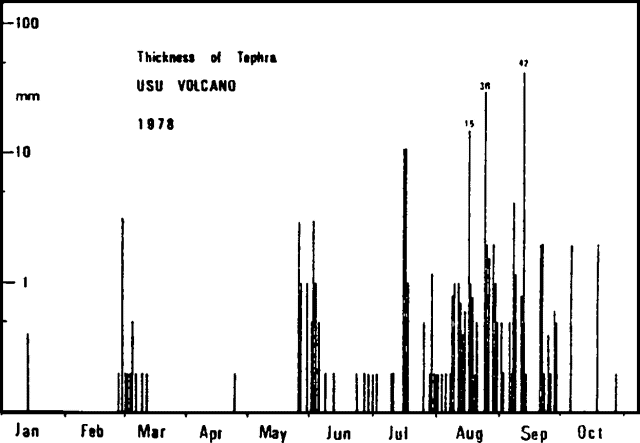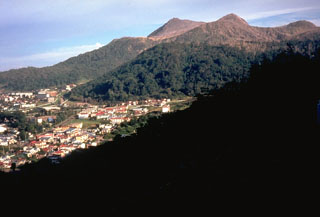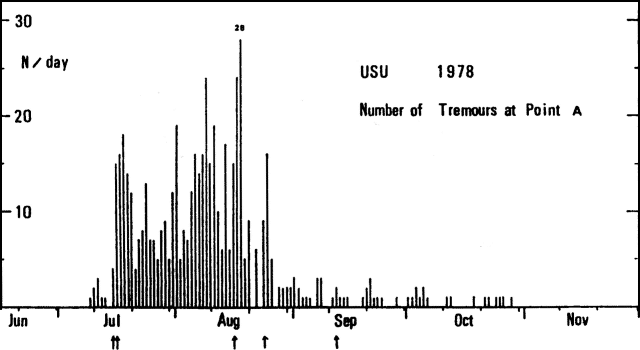Report on Toya (Japan) — October 1978
Scientific Event Alert Network Bulletin, vol. 3, no. 10 (October 1978)
Managing Editor: David Squires.
Toya (Japan) Stronger explosions, including incandescent ejecta; ashfall to N; seismicity and cryptodome uplift rates increase slightly
Please cite this report as:
Global Volcanism Program, 1978. Report on Toya (Japan) (Squires, D., ed.). Scientific Event Alert Network Bulletin, 3:10. Smithsonian Institution. https://doi.org/10.5479/si.GVP.SEAN197810-285030
Toya
Japan
42.544°N, 140.839°E; summit elev. 733 m
All times are local (unless otherwise noted)
Explosions were recorded on 1-2, 5-8, 11-13, 20-22, 24-25, and 27-28 September. Most lasted only a few minutes and produced ashfalls of no more than 0.5 mm in thickness (figures 11 and 12). However, the two explosions that occurred during the night of 12-13 September were the largest since steam explosions began in November 1977. Ash clouds, accompanied by much lightning, rose 2.5 km above the crater and deposited up to 3.5 cm of ash over a broad area N of the volcano. Columns of incandescent tephra, about 600 m high, were present over the crater for three 10-minute periods during the 12-13 September activity, dropping blocks in the summit area. All of the September explosions occurred from the newly-named Gin-numa Crater, which had grown to a roughly circular feature, 350 m in diameter and 70 m deep, by the end of the month.
 |
Figure 12. Daily thickness (in mm) of newly-deposited tephra at the foot of Usu. Note logarithmic scale. |
Cryptodome uplift rates and the number of local earthquakes per day both increased slightly in September, after several months of decline.
Geological Summary. Usuzan, one of Hokkaido's most well-known volcanoes, is a small stratovolcano located astride the southern topographic rim of the 110,000-year-old Toya caldera. The center of the 10-km-wide, lake-filled caldera contains Nakajima, a group of forested Pleistocene andesitic lava domes. The summit of the basaltic-to-andesitic edifice of Usu is cut by a somma formed about 20-30,000 years ago when collapse of the volcano produced a debris avalanche that reached the sea. Dacitic domes erupted along two NW-SE-trending lines fill and flank the summit caldera. Three of these domes, O-Usu, Ko-Usu and Showashinzan, along with seven crypto-domes, were erupted during historical time. The 1663 eruption of Usu was one of the largest in Hokkaido during historical time. The war-time growth of Showashinzan from 1943-45 was painstakingly documented by the local postmaster, who created the first detailed record of growth of a lava dome.
Information Contacts: JMA, Tokyo; I. Yokoyama, Hokkaido Univ.


